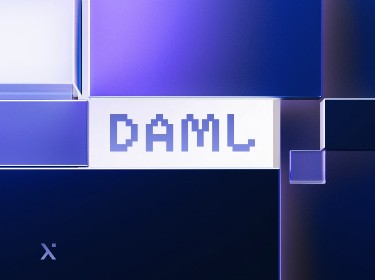Ethereum, represented by ETH, is the new chain, which is the original blockchain’s offset while Ethereum Classic, represented by ETH, is the original chain. The separation occurred when Vitalik Buterin, Ethereum founder, proposed the fork. But how do the two differ?
Ethereum is the second largest blockchain after Bitcoin. As DeFi grows in popularity and the NFT market expands, the Ethereum platform is bringing a wide range of industries onboard, from retail to entertainment.
But what about Ethereum Classic, then? You might have already stumbled upon the ETC coin while treading on crypto exchanges. Especially given that much like several other top cryptos, Ethereum Classic recently saw a huge spike in price.
Read on our detailed comparison of both Ethereum and Ethereum Classic to understand their key differences and choose the platform that best matches your business objectives.
What is Ethereum (ETH)? Blockchain origins
![]()
Ethereum was introduced as a groundbreaking project by Vitalik Buterin back in 2013. The main idea was to allow developers to create their own applications for the blockchain and automate the execution of tasks.
Obviously, the crypto community wanted much more from the prevailing Bitcoin network than it could actually offer at the time. People were keen to expand the uses of cryptocurrency and bring the benefits of decentralization to more areas of life and business. Ethereum delivered on its promise and thus paved the way for second-generation blockchains.
It was essentially Ethereum that introduced the concept of smart contracts — self-executable pieces of software that could carry out business relations between blockchain users. Simple pieces of code could be combined together to form the decentralized apps that dominate the Ethereum world today.
At present there are close to 3000 dApps on mainstream Ethereum, encompassing various projects from wallets to decentralized exchanges. There’s also a heap of apps offering an experience that’s more relevant to the average, non-crypto user. Ethereum dApps and platforms include supply chain, security, real estate, eCommerce, entertainment, and gaming solutions.
Before the split, it was the DAO application that sparked this outburst of exciting projects. And at the same time, the DAO was the reason for the Ethereum vs Ethereum Classic brawl and the eventual split of the community into two separate blockchains.
Check out some of the unique DeFi Lending, DEX, and payments projects on Ethereum
What was the DAO?
The Decentralized Autonomous Organization (DAO), first introduced to Ethereum, was an application aimed at funding startups and emerging projects on the network. It was also a tool used for taking all the important decisions regarding Ethereum’s future. Unlike traditional governing and fundraising bodies, the DAO operated without human intervention, being based on programmed code.
The DAO itself is not a one-off project. These types of applications are part of the very interesting concept of the self-governing independent company, and they deserve to be explored in their own right. Check out the full story on DAO in our overview article.
It was an outstanding achievement on Ethereum’s part to fully replace corporate leadership and give the power of control to the community through voting. To participate, all the members simply had to invest in the DAO. They contributed ETH to obtain DAO tokens which gave them the right to vote for projects.
The funds that were invested into the DAO development were then distributed to the projects that won the vote. Those who invested benefited from the fundraising too, as stakeholders could collect dividends from successful projects.
The platform was an unarguable success, raising over $150 million in less than a month, with more than 10,000 participating investors. It was the largest crowdfunding project at the time.
Find out how we can help you fundraise via tokens with our STO platform
The DAO also allowed an exit route for those investors who were disappointed by the choices of the larger community. They could withdraw their funds at any time. The only restraint was a 28-day lock period that prevented owners from spending these funds right away.
Ethereum flaw and the DAO hack
Shortly after the remarkable crowdsale, Peter Vessenes, a member of the community, discovered a serious vulnerability in Ethereum smart contracts. It concerned a potential “recursive call” vulnerability in the code, a problem that could allow the bypassing of certain stipulations set forth in the DAO by means of repeating actions and events in a constant loop.
Spelling doom for the original Ethereum network, Vessenes publicly disclosed this loophole. Some experts argued that despite the security flaw, the funds raised through DAO are safe and sound. However, while the community was busy fixing the bug, a mischievous actor took advantage of it and slowly drained $50 million worth of Ether.
Here’s how the hacker managed to steal the funds:
- The hacker created a smart contract that would generate a request to withdraw funds from the DAO.
- Normally, the DAO would first provide ETH in exchange for the DAO tokens and then finalize the transaction on the network.
- However, the hacker placed a recursive call in his request that would return the smart contract to the action of withdrawing funds before finalizing the transaction
- This way the hacker continued to siphon ETH from the DAO fund to his account.
When the attack was discovered, sheer pandemonium broke out throughout the Ethereum network.
The aftermath: Ethereum hard fork and the birth of Ethereum Classic
![]()
Naturally, those who invested in the DAO and lost their funds wanted to have their money back. Thanks to the 28-day holding period, this was still possible. Ethereum’s founders proposed a soft fork that would blacklist the hacker’s account and prevent him/her from transferring the stolen ETH.
The attacker responded with attempts to bribe the Ethereum community into not following the soft fork decision. A reward of 1 million ETH and 100 BTC awaited the miners who agreed to protest against it.
At the same time, the shady individual argued that the funds were acquired lawfully, according to rules programmed into DAO smart contracts. In part, this was true as the DAO was supposed to be governed strictly by the code, avoiding human intervention and centralized control.
Another argument was that any attempt to reverse the hack would hurt Ethereum’s status as an immutable blockchain ledger. It would put question marks over the philosophical and moral backbone of the technology.
Before the community could decide on the soft fork, a vulnerability was found in its own code as well, making the update unsafe.
Eventually, the chaos led to the drastic decision to hard-fork the network and roll back to its state before the DAO hack. This meant that all transactions would be reverted and funds returned to their owners. The hard fork reallocated the DAO investments to a separate smart contract, letting users withdraw their funds.
After a heated debate, the majority of the Ethereum community accepted the hard fork. Node runners, miners, and exchange providers were instructed to update their blockchain software. On July 20, 2016, the Ethereum network rolled back to block #1,920,000 and continued its story from there.
Get some insights on how to choose the best Ethereum wallet
What is Ethereum Classic (ETC) then?
The decision to reverse the state of Ethereum sparked controversy. Blockchain networks were supposed to be immutable and provide a shield against any attempts of censorship.
Some users thought it was right to accept the DAO’s failure and to learn from its engineering mistakes. Sticking to the original philosophy ingrained into blockchain software, a portion of the community stayed around to preserve the original network and formed Ethereum Classic.
Therefore, Ethereum Classic may be called as the original blockchain that was born after the hard fork.
Ethereum vs Ethereum Classic: what is the difference between the two?
![]()
For the most part, Ethereum and Ethereum Classic are two very similar platforms. Their blockchains are identical up to block 1,920,000. From this point each network went on to record its own history of transactions.
Ethereum Classic tries to keep up with its mainstream counterpart in terms of updates to functionality. The latest Magneto hard fork is a good example of its efforts. The update follows the Ethereum Berlin upgrade and is intended to improve network security while cutting down on gas fees.
Both platforms offer smart contract capabilities and provide the tools to create and host decentralized apps. However, mainstream Ethereum is much more popular among developers since its more dynamic approach to change is much more appealing.
Ethereum Classic tends to be more conservative and does not have the support and resources of the Ethereum foundation, with Vitalik Buterin at its helm.
How is Ethereum Classic different?
Unlike Ethereum, which has an unlimited supply of ETH crypto, Ethereum Classic established a more predictable monetary policy for its ETC tokens. Back in 2017, the Gotham upgrade set its supply hard cap for 210 million ETC, with block rewards being cut by 20% every 5 million blocks.
This makes it very different from mainstream Ethereum, where the yearly supply was fixed at 18 million ETH. It creates a sort of rarity for the ETC cryptocurrency and maintains its value.
Another key difference between the two blockchains lies in the consensus mechanisms they use. Ethereum Classic intends to continue to rely on proof-of-work mining, as pioneered by Bitcoin, although the approach has been deemed in some ways inefficient and obsolete. This is also a sign of the Ethereum Classic’s conservative ways.
The mainstream Ethereum, on the other hand, has recently migrated to an alternative proof-of-stake consensus, which made Ethereum blockchain more energy-efficient. What’s more, this step laid the foundations for the platform’s upcoming security and scalability updates.
Find out everything you should know about the Ethereum Merge
Ethereum vs Ethereum Classic investment: which one to opt for?
Although both originated from the same blockchain, Ethereum is by far the most popular investment choice. As of November 2022, the price of 1 ETH ranged from $1,079 to $1,667 while the price of 1 ETC varied between $17,84 and $26,48.
What’s more, Ethereum is currently the world’s second largest cryptocurrency, which also makes it a good choice for investment purposes.
Does Ethereum Classic (ETC) have a future?
Although Ethereum Classic is less popular compared to Ethereum, it has a more robust monetary policy and its ETC cryptocurrency can prove to be a more reliable store of value. It takes quite a lot from Bitcoin’s philosophy, so it may be somewhat more stable and less prone to fluctuations than most alternative coin platforms.
Given its high compatibility with mainstream Ethereum, some crypto enthusiasts believe the two platforms could form a strong symbiotic relationship. Ethereum Classic provides the same capacity to run and develop dApps for the growing DeFi world of tomorrow. At the same time, its competitive price provides a good entry point for lower-ranked investors.
Conclusion
The split of Ethereum into separate chains created two different camps, each with its own strategy and beliefs.
Mainstream Ethereum has enjoyed much broader adoption, and has a much larger community that seeks to maximize the platform’s performance and further develop its DeFi capabilities. On the other hand, Ethereum Classic’s stance with the original proof-of-work consensus and its robust monetary policy could make it an interesting alternative to the new Ethereum 2.0 blockchain.
In the light of recent moves to provide interoperability between networks, the strengths and weaknesses of both Ethereum twins can be leveraged to create competitive solutions.
Just don’t forget to seek the expertise of a seasoned dApp development team if you’re looking to shake up the market with a new Ethereum project. Our smart contract development company will help you avoid most of the pitfalls and technical difficulties along the way.




